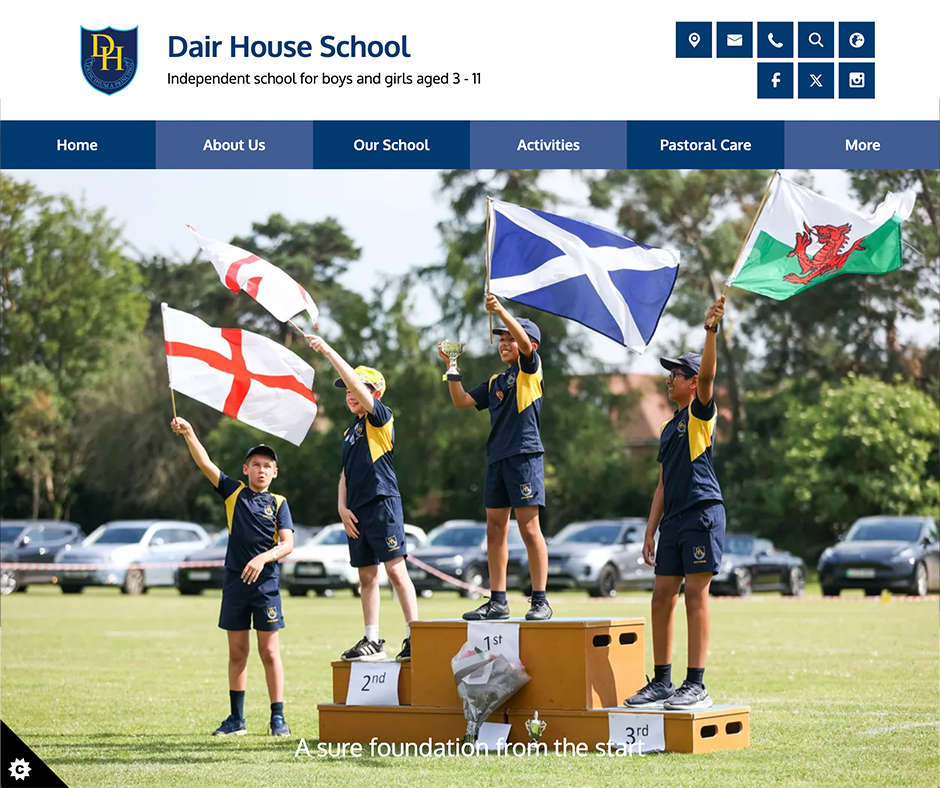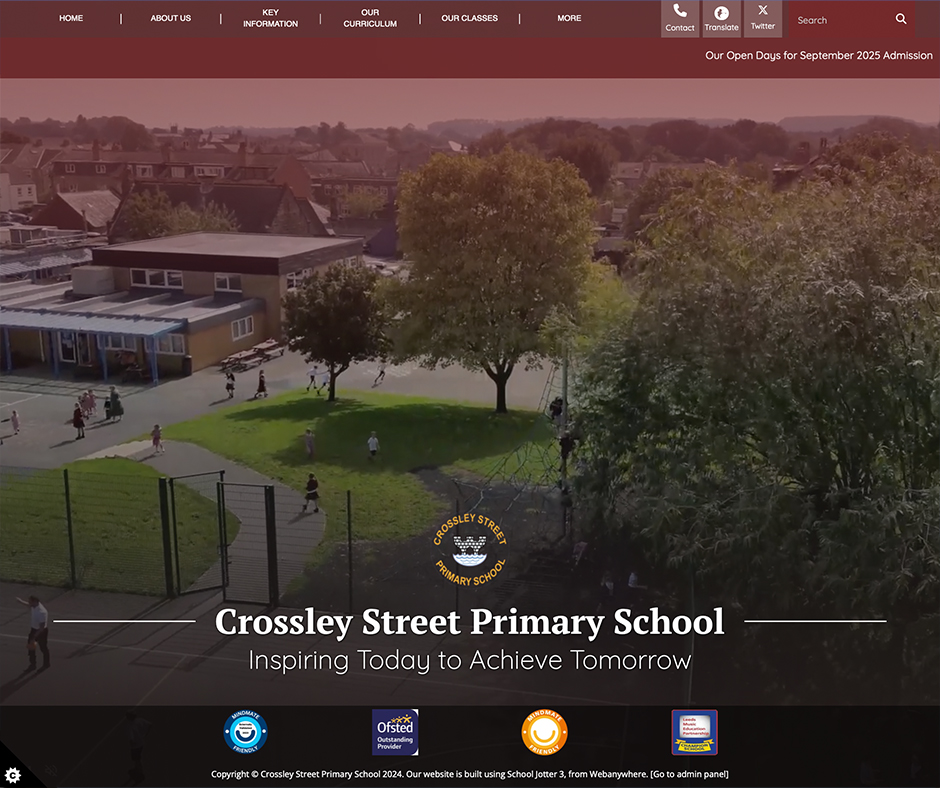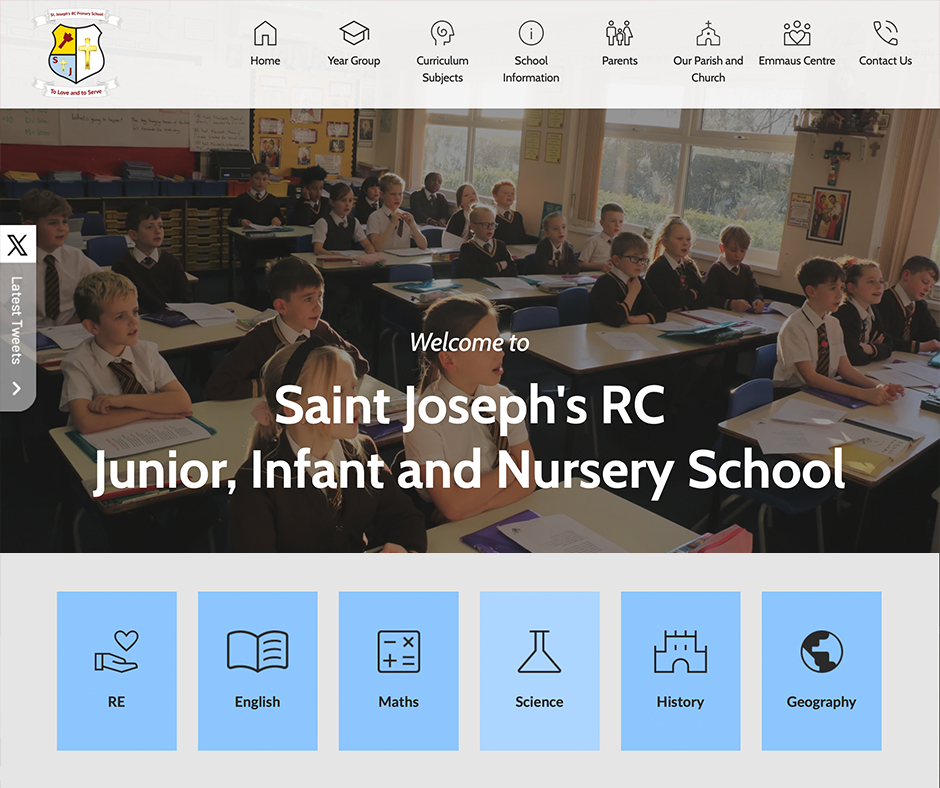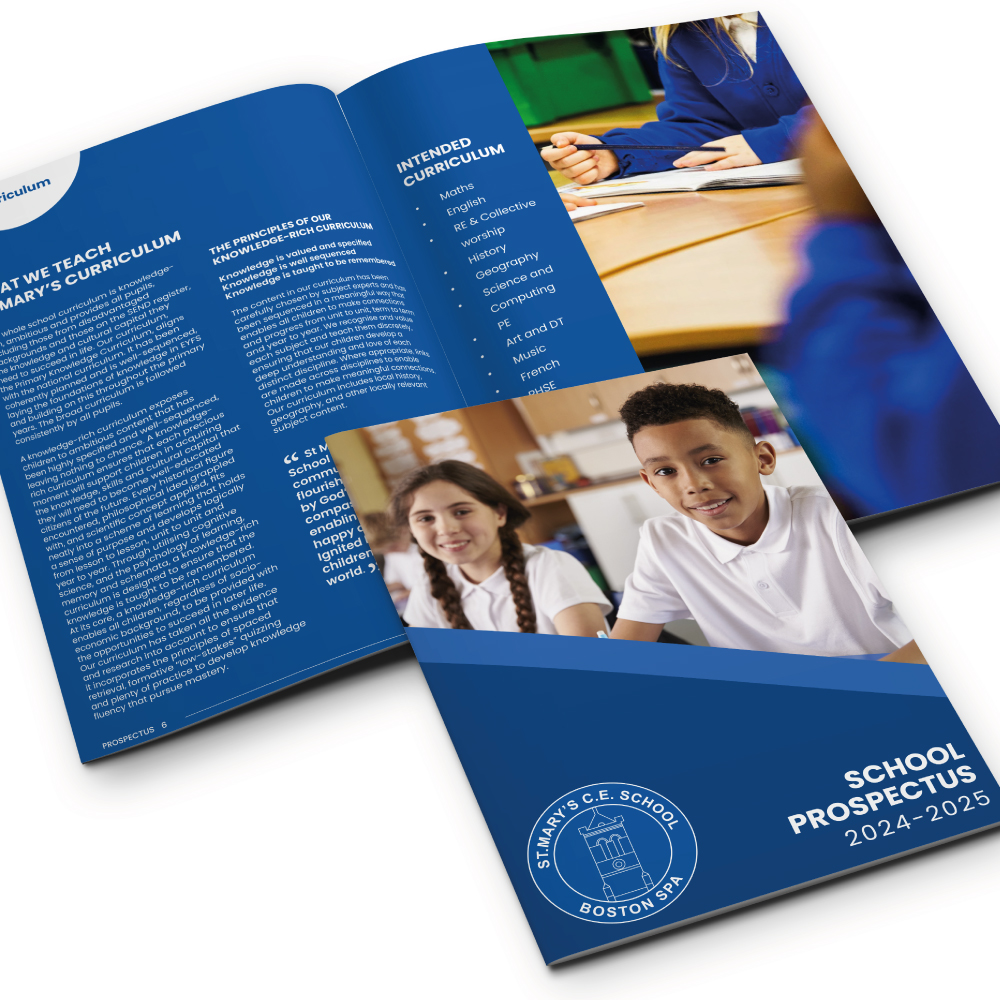Welcome to our comprehensive guide on running an excellent primary school in the UK! Whether you’re an experienced headteacher or just starting in the education sector, this checklist will ensure your school is on the right path to success. We’ve covered everything from vision and leadership to curriculum, student wellbeing, and community involvement. Dive into each section to explore practical tips and best practices for fostering a thriving educational environment. Here’s to creating an outstanding primary school experience for every child!
Checklist for Running an Excellent School
Below is a list of 100 areas to think about as you plan improvements within your school, conduct audits, and make your school outstanding:
1. Vision and Mission Statement: Evaluated under leadership and management, ensuring the school has clear aims and direction.
2. Leadership and Management:
•Strong, experienced leadership team
•Clear organisational structure
•Effective communication channels
•Regular staff meetings
Ofsted evaluates the effectiveness of leaders and managers in improving teaching, learning, and outcomes for pupils.
3. Staffing:
•Qualified and motivated teachers
•Support staff (TAs, admin, etc.)
•Regular professional development
•Performance appraisal systems
Considered under leadership and management, particularly how staff are developed and supported.
4. Curriculum:
•Comprehensive and balanced curriculum
•Adherence to national standards
•Integration of ICT in teaching
•Regular review and updates
The quality of education inspection focuses on the curriculum’s intent, implementation, and impact.
5. Teaching and Learning:
•Differentiated instruction
•Inclusive education practices
•Use of innovative teaching methods
•Regular assessments and feedback
Ofsted evaluates the effectiveness of teaching, learning, and assessment.
6. Student Wellbeing:
•Safeguarding policies
•Pastoral care system
•Anti-bullying measures
•Mental health support
Safeguarding is a key aspect, and Ofsted looks at how schools ensure pupils are safe and supported.
7. Parental Engagement:
•Regular parent-teacher meetings
•Parental involvement in school activities
•Effective communication with parents
•Support for parents (workshops, resources)
Parent and carer engagement is part of leadership and management, assessing communication and involvement.
8. Community Involvement:
•Partnerships with local businesses
•Community service projects
•Local cultural integration
•Open days and school events
Community links and cultural development can contribute to personal development and leadership assessment.
9. Facilities and Resources:
•Well-maintained buildings and grounds
•Modern classrooms
•Library and resource centres
•Sports facilities
Ofsted inspects the quality of resources and their impact on education.
10. Health and Safety:
•Regular safety drills
•First aid trained staff
•Up-to-date health and safety policies
•Secure school premises
Health and safety are essential for safeguarding evaluations.
11. Financial Management:
•Transparent budgeting process
•Effective allocation of resources
•Regular financial audits
•Fundraising initiatives
Effective financial management supports overall leadership and governance.
12. Technology Integration:
•Up-to-date hardware and software
•IT support services
•E-safety policies
•Digital literacy programs
Part of the quality of education, especially how technology supports learning.
13. Extracurricular Activities:
•Variety of clubs and societies
•Sports teams and competitions
•Arts and music programs
•After-school care
Evaluated under personal development, looking at opportunities beyond academics.
14. Environmental Awareness:
•Eco-friendly policies
•Recycling programs
•Outdoor learning opportunities
•Gardening projects
Environmental initiatives can contribute to personal development.
15. Student Voice:
•Student council
•Regular student surveys
•Opportunities for student leadership
•Feedback mechanisms
Pupil feedback and leadership opportunities are considered under personal development.
16. Continuous Improvement:
•Regular self-evaluation
•External inspections and reviews
•Action plans based on feedback
•Staff and student input on improvements
Continuous improvement reflects the effectiveness of leadership and management.
17. Inclusive Education:
•Support for SEN (Special Educational Needs)
•EAL (English as an Additional Language) programs
•Cultural diversity initiatives
•Accessibility accommodations
Inclusivity and support for diverse needs are crucial for quality of education and personal development.
18. Curricular Enrichment:
•Educational trips and visits
•Guest speakers
•Themed days and weeks
•Interdisciplinary projects
Enrichment activities contribute to the overall quality of education.
19. Data Management:
•Secure data handling
•Use of educational software
•Regular data analysis for improvement
•Data protection policies
Data management supports leadership, management, and accountability.
20. Governance:
•Active and knowledgeable governing body
•Clear governance policies
•Regular governor meetings
•Governor training and development
Effective governance is a critical aspect of leadership and management.
21. Professional Networks:
•Collaboration with other schools
•Membership in educational organisations
•Attending conferences and workshops
•Sharing best practices
Professional networks support continuous improvement and staff development.
22. Inspection Readiness:
•Preparedness for Ofsted inspections
•Documentation and evidence collection
•Familiarity with inspection frameworks
•Action plans based on inspection feedback
Inspection readiness reflects leadership’s proactive approach.
23. Early Years Provision:
•High-quality early years curriculum
•Well-trained early years staff
•Safe and stimulating environments
•Parental involvement in early years
Early years provision is a specific focus of Ofsted inspections.
24. Assessment Practices:
•Regular formative assessments
•Use of summative assessments
•Moderation of assessments
•Reporting of assessment outcomes
Assessment practices are crucial for evaluating teaching and learning effectiveness.
25. Homework Policies:
•Clear homework guidelines
•Age-appropriate assignments
•Support for homework completion
•Feedback on homework
Homework policies contribute to the quality of education and home-school links.
26. Transition Support:
•Support for new pupils
•Transition programs for Year 6
•Liaison with secondary schools
•Orientation activities
Transition support impacts personal development and pupil wellbeing.
27. Cultural Competence:
•Celebration of cultural diversity
•Multicultural curriculum content
•Support for bilingual students
•Anti-racism education
Cultural competence enhances personal development and inclusivity.
28. Performance Management:
•Clear performance criteria
•Regular performance reviews
•Professional development plans
•Addressing underperformance
Performance management supports leadership effectiveness and staff development.
29. School Policies:
•Up-to-date policies (behaviour, attendance, etc.)
•Regular policy review
•Policy accessibility for staff and parents
•Clear implementation guidelines
Policies are fundamental to leadership, management, and safeguarding.
30. Crisis Management:
•Crisis response plan
•Communication plan for emergencies
•Training for crisis situations
•Regular drills and evaluations
Crisis management ensures pupil safety and effective school operation.
31. Behaviour Management:
•Clear behaviour policy
•Positive behaviour reinforcement
•Consistent disciplinary procedures
•Support for behavioural issues
Behaviour management impacts personal development and school culture.
32. Academic Support:
•Tutoring programs
•Intervention strategies
•Learning support assistants
•Personalized learning plans
Academic support is essential for quality education and pupil outcomes.
33. Physical Education:
•Comprehensive PE curriculum
•Qualified PE teachers
•Regular physical activity opportunities
•Health and fitness education
Physical education contributes to personal development and wellbeing.
34. Library Services:
•Well-stocked library
•Trained librarian
•Regular reading programs
•Integration with curriculum
Library services support literacy and overall educational quality.
35. Arts Education:
•Art and music classes
•Opportunities for performance
•Art exhibitions
•Collaboration with local artists
Arts education is vital for personal development and creativity.
36. School Culture:
•Positive school ethos
•Respectful relationships
•Celebrations of success
•Clear values and expectations
A positive school culture underpins effective teaching, learning, and personal development.
37. Special Events:
•Annual sports day
•School fairs
•Holiday celebrations
•Graduation ceremonies
Special events enrich school life and community involvement.
38. Communication Strategy:
•Regular newsletters
•School website updates
•Social media presence
•Effective use of emails and letters
Effective communication supports leadership and parent engagement.
39. Professional Development:
•Ongoing training opportunities
•Support for further qualifications
•In-house training sessions
Professional development is critical for staff effectiveness and quality education.
40. Inclusivity Initiatives:
•Anti-discrimination policies
•Support for minority groups
•Inclusive curriculum content
Inclusivity initiatives ensure all pupils feel valued and supported.
41. Resource Management:
•Efficient use of resources
•Sustainable practices
•Regular inventory checks
Effective resource management supports overall school operations.
42. Homework Clubs:
•After-school homework support
•Quiet study spaces
•Access to resources and staff
Homework clubs help pupils succeed academically.
43. Volunteer Programs:
•Opportunities for community volunteers
•Training for volunteers
•Volunteer recognition
Volunteer programs enhance community involvement and school support.
44. Innovation in Education:
•Pilot new teaching methods
•Encourage creative thinking
•Integrate new technologies
Innovation supports continuous improvement in teaching and learning.
45. Career Education:
•Introduce career options
•Visits from professionals
•Basic career planning activities
Career education prepares pupils for future opportunities.
46. Attendance Monitoring:
•Robust attendance policies
•Early intervention for poor attendance
•Reward good attendance
Attendance monitoring impacts pupil outcomes and school performance.
47. Food and Nutrition:
•Healthy school meals
•Nutrition education
•Safe dining environment
Food and nutrition affect pupil health and wellbeing.
48. Parental Feedback:
•Regular surveys
•Parent forums
•Suggestion boxes
Parental feedback informs school improvement and engagement.
49. School Branding:
•Consistent school identity
•Logo and motto
•Positive public relations
School branding enhances community perception and engagement.
50. Eco-School Initiatives:
•Energy-saving measures
•Wildlife-friendly policies
•Environmental education
Eco-school initiatives promote sustainability and environmental awareness.
51. Staff Wellbeing:
•Support for mental health
•Work-life balance initiatives
•Staff appreciation activities
Staff wellbeing is crucial for effective teaching and leadership.
52. Learning Environments:
•Flexible classroom layouts
•Inspirational displays
•Comfortable furniture
Positive learning environments support pupil engagement and achievement.
53. Student Leadership:
•Leadership roles for students
•Leadership training programs
•Opportunities for student decision-making
Student leadership fosters personal development and school involvement.
54. Field Trips:
•Educational outings
•Safety measures for trips
•Follow-up activities
Field trips enrich the curriculum and provide experiential learning.
55. Professional Networking:
•Encourage staff collaboration
•Networks for different subject areas
•Sharing resources and ideas
Professional networking supports staff development and best practices.
56. Parental Workshops:
•Sessions on educational topics
•Workshops on parenting skills
•Technology usage guidance
Parental workshops enhance home-school collaboration and support.
57. Student Records:
•Accurate record-keeping
•Secure storage of records
•Regular updates
Effective student record management supports school operations and accountability.
58. Sustainable Practices:
•Reduce, reuse, recycle programs
•Environmental awareness days
•Green initiatives
Sustainable practices promote environmental responsibility.
59. Emergency Preparedness:
•Detailed emergency plans
•Training for all staff
•Regular practice drills
Emergency preparedness ensures pupil safety and effective crisis response.
60. Cultural Programs:
•Celebration of cultural events
•Cross-cultural education
•Partnerships with cultural organizations
Cultural programs enhance personal development and community engagement.
61. Language Programs:
•Foreign language instruction
•EAL support programs
•Language exchange opportunities
Language programs support linguistic development and cultural competence.
62. Health Services:
•Access to school nurse
•Regular health checks
•Health education programs
Health services support pupil wellbeing and readiness to learn.
63. Parent-Teacher Association:
•Active PTA involvement
•Fundraising activities
•Support for school events
PTA involvement strengthens community and parent engagement.
64. Safety Protocols:
•Clear safety procedures
•Regular safety audits
•Safety training for staff and students
Safety protocols ensure a secure learning environment.
65. Resource Accessibility:
•Easy access to learning materials
•Availability of online resources
•Inclusive access for all students
Resource accessibility supports diverse learning needs.
66. Civic Engagement:
•Participation in local events
•Encouragement of civic responsibility
•Engagement with local government
Civic engagement fosters community involvement and responsibility.
67. Outdoor Learning:
•Outdoor classrooms
•Nature-based learning activities
•Safe outdoor play areas
Outdoor learning enhances educational experiences and personal development.
68. Academic Competitions:
•Participation in academic contests
•Support for gifted students
•Celebration of achievements
Academic competitions promote excellence and pupil motivation.
69. Performance Arts:
•Drama and theatre programs
•Opportunities for public performances
•Collaboration with local theatres
Performance arts contribute to personal development and creativity.
70. Peer Mentoring:
•Peer support programs
•Training for peer mentors
•Regular mentoring sessions
Peer mentoring supports pupil wellbeing and academic success.
71. Language Arts:
•Strong literacy programs
•Regular reading sessions
•Writing workshops
Language arts are fundamental to quality education.
72. Financial Literacy:
•Basic financial education
•Practical money management activities
Financial literacy prepares pupils for future responsibilities.
73. STEM Education:
•Focus on science, technology, engineering, and math
•STEM clubs and activities
•Collaboration with STEM professionals
STEM education is essential for future skills and knowledge.
74. Global Awareness:
•Global education curriculum
•International partnerships
•Cultural exchange programs
Global awareness enhances pupils’ understanding of the world.
75. Cognitive Development:
•Activities that promote critical thinking
•Problem-solving exercises
•Cognitive skill assessments
Cognitive development supports academic success and personal growth.
76. Reading Programs:
•Regular library visits
•Author visits and book talks
•Reading incentives
Reading programs enhance literacy and a love for reading.
77. Drama and Theatre:
•School plays and performances
•Drama workshops
•Collaboration with local theatres
Drama and theatre contribute to personal development and creativity.
78. Sensory Integration:
•Sensory-friendly spaces
•Activities for sensory development
•Support for sensory processing issues
Sensory integration supports diverse learning needs.
79. Physical Health Programs:
•Regular physical check-ups
•Fitness programs
•Health and hygiene education
Physical health programs support pupil wellbeing and readiness to learn.
80. Counselling Services:
•Access to school counselor
•Emotional support programs
•Group therapy sessions
Counselling services support mental health and emotional wellbeing.
81. Digital Citizenship:
•Education on safe internet use
•Cyberbullying prevention programs
•Responsible digital behavior guidelines
Digital citizenship is crucial for safe and responsible technology use.
82. Creative Arts:
•Art and craft workshops
•Exhibitions of student artwork
•Integration of arts in curriculum
Creative arts enhance personal development and creativity.
83. Gifted Education:
•Programs for gifted and talented students
•Enrichment activities
•Acceleration opportunities
Gifted education supports high achievers and academic excellence.
84. Inclusion Programs:
•Support for diverse learning needs
•Inclusive classroom practices
•Sensitivity training for staff and students
Inclusion programs ensure all pupils feel valued and supported.
85. Robust Feedback Systems:
•Regular feedback from staff
•Student feedback mechanisms
•Implementation of feedback
Feedback systems support continuous improvement and pupil outcomes.
86. Collaborative Projects:
•Group learning activities
•Interdisciplinary projects
•Partnerships with other schools
Collaborative projects enhance learning and teamwork skills.
87. Ethical Education:
•Programs on ethics and values
•Encouraging ethical behaviour
•Discussions on moral issues
Ethical education promotes character development and responsible behaviour.
88. School Celebrations:
•Regular celebrations of success
•Annual school awards
•Celebration of diverse achievements
School celebrations enhance school culture and community spirit.
89. Leadership Training:
•Training for aspiring leaders
•Leadership development programs
•Opportunities for leadership roles
Leadership training supports staff development and school improvement.
90. Language Development:
•Speech and language support
•Literacy development programs
•Language-rich environment
Language development is crucial for academic success and communication skills.
91. Behavioural Support:
•Positive behaviour interventions
•Support for challenging behaviours
•Consistent behaviour policies
Behavioural support ensures a positive learning environment.
92. Environmental Education:
•Lessons on sustainability
•Eco-friendly school projects
•Outdoor environmental learning
Environmental education promotes sustainability and responsibility.
93. Intervention Programs:
•Early intervention for learning issues
•Targeted support programs
•Regular monitoring of progress
Intervention programs support pupils with additional needs.
94. Cultural Literacy:
•Curriculum that includes diverse perspectives
Cultural literacy enhances understanding and respect for diversity.
95. Parental Support Services:
•Resources for parenting
•Workshops for parental skills
•Family support programs
Parental support services enhance home-school collaboration and pupil success.
96. Modern Infrastructure:
•Up-to-date school facilities
•Comfortable learning environments
•Adequate technological infrastructure
Modern infrastructure supports effective teaching and learning.
97. Team Building:
•Team-building activities for staff
•Encouragement of collaborative teaching
•Regular team meetings
Team building enhances staff collaboration and school culture.
98. Effective Timetabling:
•Balanced school schedule
•Efficient use of time
•Flexibility for special programs
Effective timetabling ensures a well-organised and productive school day.
99. Continuous Feedback Loop:
•Regular feedback collection
•Implementation of feedback
•Continuous improvement culture
A continuous feedback loop supports ongoing development and school improvement.
100. Holistic Education:
– Focus on overall development
– Integration of arts, sports, and academics
– Emphasis on emotional and social growth
By focusing on these 100 areas, school leadership can create a robust framework for continuous improvement and educational excellence. Each aspect contributes to a well-rounded, supportive, and dynamic learning environment that caters to the diverse needs of students, staff, and the wider community.
Implementing this comprehensive checklist will not only ensure readiness for Ofsted inspections but also foster a culture of high standards and innovation. Leaders will be better equipped to manage resources efficiently, support staff development, engage with parents and the community, and promote student wellbeing and achievement.
Ultimately, this holistic approach will guide school leadership on their journey to becoming an outstanding school, delivering exceptional education and preparing students for future success. By committing to ongoing self-evaluation and embracing best practices, schools can achieve excellence and create a positive, enriching experience for every student.























